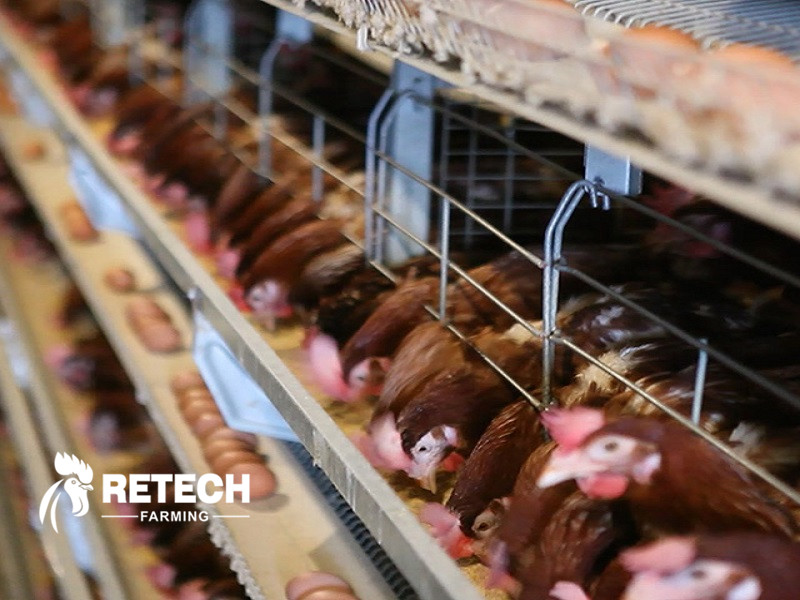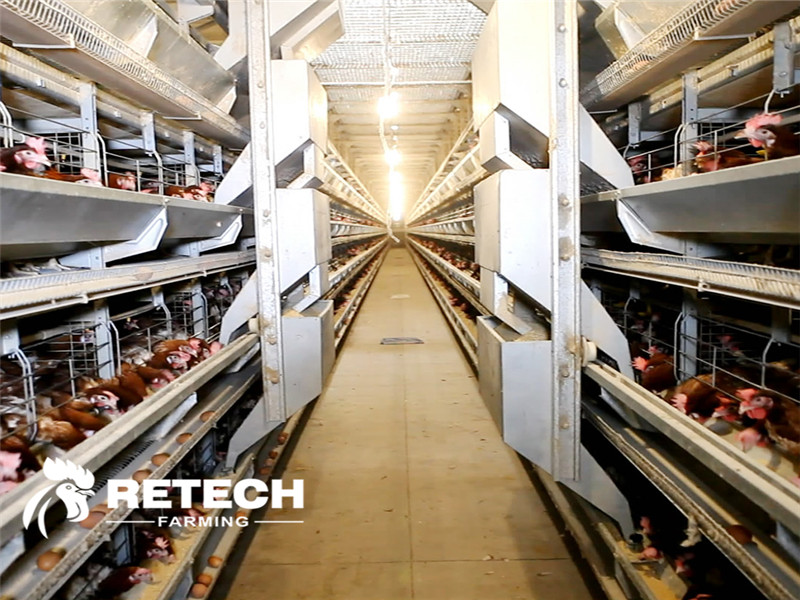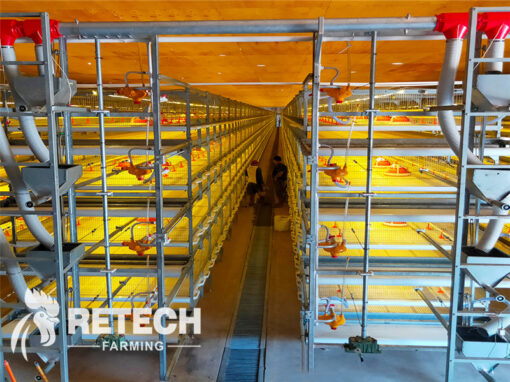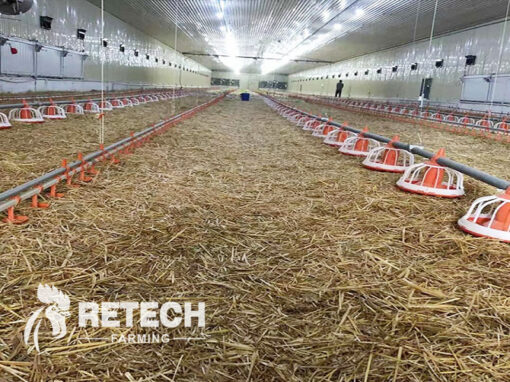In the breeding of laying hens, the chickens of individual farmers will experience hair loss. The hair loss is mainly concentrated on the neck and back, and the feather coverage of serious chickens is even less than 70%. This situation has no effect on the mortality of the chickens, but it will increase the feed intake due to the increased energy consumption of the chickens, which will seriously lead to a decrease in egg production, and even affect the price of culling chickens, which will greatly affect the benefits to farmers.
In actual production, how to avoid laying hens from depilation?
1. Nutritional factors
1-1.Energy level
The low level of feed energy often occurs when farmers use low-energy and high-protein feeds, or do not arbitrarily increase or decrease the formula ratio according to the feed formula, resulting in insufficient energy intake of chickens. Long-term consumption of this type of feed causes the feathers of laying hens to fall off.

chicken farm
1-2.Protein level
Low protein levels, especially the lack of sulfur-containing amino acids, directly affect the synthesis of keratin, chickens cannot obtain enough nutrients for feather synthesis, and feather growth is hindered, resulting in serious hair loss problems.
1-3.Mineral content
The farmers who use the premix have excessive addition of stone powder in the feed, and the calcium content in the diet is too high, which interferes with the absorption and utilization of the minerals copper and zinc, causing skin derivative lesions and secondary hair loss.
1-4.Salt content
Salt in the feed is an important nutritional factor to maintain the normal metabolism and production performance of the body. Some laying hens farmers add too much salt in the ingredients, causing chronic salt poisoning in the flocks, causing the feathers to fall off easily.
2. Environmental factors

brooding house
2-1.Temperature and humidity
In the season of high temperature and high humidity, chickens will shed a small amount of hair in order to better dissipate the heat in their bodies, but this is not obvious in newly produced chickens. This phenomenon is particularly evident in open houses with poor ventilation and cooling conditions.
2-2.Lighting program
Frequent changes to lighting programs (power outages, constant lights, or changing lights on and off) can lead to a drop in egg production and lead to hair loss. When the seasons change (especially the change of spring and summer), the light suddenly increases, which causes stress to the flocks, causing the flocks to be manic and prone to feather pecking and hair loss.

chicken equipment 2
2-3.Oxygen content
In the north, the houses of some laying hen houses are tightly closed and poorly ventilated, resulting in a decrease in the oxygen content in the house, and excessive harmful gases can cause hair loss in the flocks.


